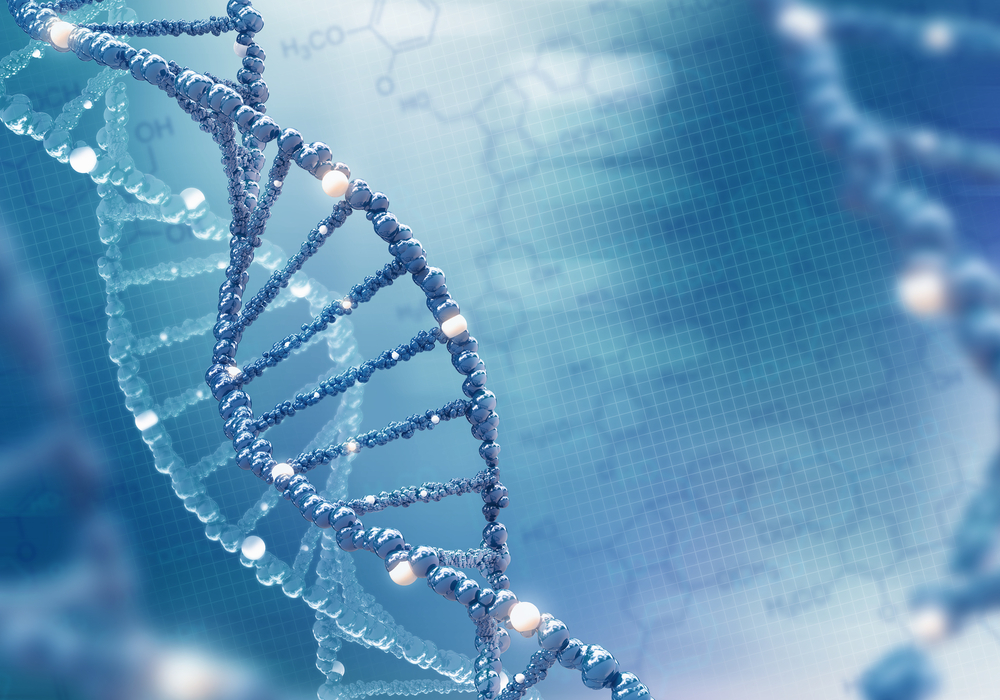20-Year Mystery of Girl with Angelman and 2nd Rare Disease Solved via Genetic Testing

Scientists, armed with new technologies, cracked a 20-year mystery surrounding a girl diagnosed with two rare inherited disorders, Angelman syndrome and cholesterol side-chain cleavage enzyme (P450scc) deficiency, by finding both have a common genetic origin.
Their case report, “Adrenal Insufficiency, Sex Reversal, and Angelman Syndrome due to Uniparental Disomy Unmasking a Mutation in CYP11A1,” was published in Hormone Research in Paediatrics last year. It was named “best novel insight paper” at the Pediatric Endocrine Society’s Annual Meeting held this year in Baltimore.
P450scc deficiency is a rare genetic disorder caused by mutations in the CYP11A1 gene. It is usually associated with primary adrenal insufficiency (also known as Addison’s disease) that may or may not be linked to 46,XY disorder of sexual development (DSD), a disorder in which individuals are genetically male, but their genitalia is not clearly male or female.
Angelman syndrome is a neurodevelopmental disorder caused by the loss or poor functioning of the maternal copy of the ubiquitin protein ligase E3A (UBE3A) gene in neurons in specific brain regions. It is often associated with severe intellectual disability, difficulty speaking, loss of movement control (ataxia), and epileptic seizures.
In this study, researchers at Cincinnati Children’s Hospital Medical Center described the clinical case of a girl with a combination of primary adrenal insufficiency, DSD, and Angelman syndrome.
Although the girl was considered normal at birth, clinicians began noticing developmental delays when she was 3 months old. At 13-months-old, she underwent cytogenetic analysis (a test that examines the number and structure of chromosomes) and was found to have an abnormal 47,XXY karyotype (the group of an individual’s chromosomes), containing two X chromosomes and one Y chromosome. Normally, people have 46 chromosomes, 46XY (men) or 46XX (women).
Because her external female genitalia failed to match her male genetic background, clinicians performed further analyses, including hormonal tests, magnetic resonance imaging (MRI) of the abdomen, and a series of genetic tests.
Despite physically appearing to be female, the girl was found to have a pair of testes in her abdomen and had a series of hormonal alterations consistent with the sex reversal typical of DSD.
Genetic analyses revealed the girl had uniparental disomy (UPD), a rare condition in which an individual receives two copies of a chromosome, or part of a chromosome, from the same parent.
In her case, the girl received two poorly working copies of chromosome 15 from her father, resulting in the lack of maternal UBE3A associated with Angelman syndrome. This explained her developmental delays and seizures at a very young age.
Whole-exome sequencing (WES) — a technique that examines the DNA sequence of all genes that code for proteins (exome) — found the girl had a new genetic variant present in both copies of the CYP11A1 gene, also found on chromosome 15, which explained her P450scc deficiency, as well as her primary adrenal insufficiency, DSD, and hormonal changes.
“It’s a unique conglomeration of symptoms, manifested by the combination of these two very rare disorders,” Andrew Dauber, MD, MMSc, the division chief of endocrinology at Children’s National Health System and a study author, said in a news release. “The advent of different technologies and techniques over the years allowed pieces of her diagnosis to be made — and then brought together, commencing a 20-year diagnostic odyssey.”
They concluded the study by adding: “This case highlights the risk of UPD unmasking a recessive genetic condition and should raise awareness of the possibility of a CYP11A1 defect in patients with Angelman syndrome who present with adrenal insufficiency with or without sex reversal.”






